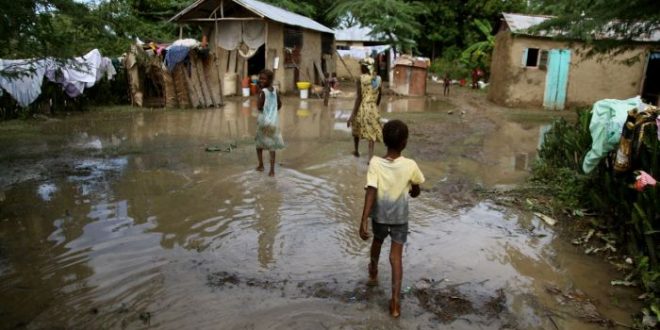Cholera is an infectious disease that causes severe watery diarrhea, which can lead to dehydration and even death if untreated. It is caused by eating food or drinking water contaminated with a bacterium called Vibrio cholera.
Cholera was prevalent in the U.S. in the 1800s, before modern water and sewage treatment systems eliminated its spread by contaminated water. Only about 10 cases of cholera are reported each year in the U.S. and half of these are acquired abroad. Rarely, contaminated seafood has caused cholera outbreaks in the U.S. However, cholera outbreaks are still a serious problem in other parts of the world. At least 150,000 cases are reported to the World Health Organization each year.
The disease is most common in places with poor sanitation, crowding, war, and famine. Common locations include parts of Africa, south Asia, and Latin America. If you are traveling to one of those areas, knowing the following cholera facts can help protect you and your family.
Cholera Causes
Vibrio cholera, the bacterium that causes cholera, is usually found in food or water contaminated by feces from a person with the infection. Common sources include:
Municipal water supplies
Ice made from municipal water
Foods and drinks sold by street vendors
Vegetables grown with water containing human wastes
Raw or undercooked fish and seafood caught in waters polluted with sewage
When a person consumes the contaminated food or water, the bacteria release a toxin in the intestines that produces severe diarrhea.
It is not likely you will catch cholera just from casual contact with an infected person.
Cholera Symptoms
Symptoms of cholera can begin as soon as a few hours or as long as five days after infection. Often, symptoms are mild. But sometimes they are very serious. About one in 20 people infected have severe watery diarrhea accompanied by vomiting, which can quickly lead to dehydration. Although many infected people may have minimal or no symptoms, they can still contribute to spread of the infection.
Signs and symptoms of dehydration include:
Rapid heart rate
Loss of skin elasticity (the ability to return to original position quickly if pinched)
Dry mucous membranes, including the inside of the mouth, throat, nose, and eyelids
Low blood pressure
Thirst
Muscle cramps
If not treated, dehydration can lead to shock and death in a matter of hours.
Health authorities in Yemen confirmed a cholera outbreak on 6 October 2016, posing an increased health risk to the population especially children. The Ministry of Public Health and Population (MoPHP) announced that a total of 11 out of 25 suspected diarrhea cases have been confirmed as Cholera cases in the capital, Sana’a. As per the Inter-Agency joint response plan, UNICEF additional fund requirements for the cholera outbreak response stands at US$3.2 million. (UNICEF, 11 Oct 2016)
As of 23 October, 31 cases of cholera have been confirmed, in Amant Al Asimah, Aden, Lahj, Al Bayda, Sana’a and Hajjah governorates. At least 7.6 million people are estimated to be living in affected and at-risk areas. (UNICEF, 24 Oct 2016)
On 27 October, [WHO] released approximately US$1 million from its internal emergency funds to support the ongoing response to the cholera outbreak in Yemen. (WHO, 27 Oct 2016)
As of 11 January [2017], 15,658 suspected cholera cases have been reported in 156 districts. A total of 180 out of 841 cases tested positive for Vibrio Cholera, serotype Ogawa. Overall, the epidemic curve shows a declining trend from week 51 onwards, while the attack rate remains high in some high-risk districts. Health response is underway through 26 Diarrhea Treatment Centres (DTC) in 24 districts, while WASH partners are undertaking response in 29 districts. An additional $3 million is being allocated through the 2017 HPF reserve allocation to address outstanding gaps. (OCHA, 15 Jan 2017)
The Yemen Pooled Fund has begun 2017 by launching a First Reserve Allocation for the Cholera response worth $2.7 million. (OCHA, 31 Jan 2017)
On 21 March, WHO stated that [MoPHP] has released updated figures for the ongoing outbreak of cholera. During the week of 6–12 March 2017, 88 new suspected cases of cholera and 2 deaths have been reported, mainly from Hajjah, Al Bayda and Sana’a governorates. (WHO, 21 Mar 2017)
Since 27 April 2017, a second wave of /acute watery diarrhea (AWD)/ cholera outbreak began in several Yemeni governorates, which had seen a decrease in AWD/ cholera cases over the past few months.(WHO, 9 May 2017)
The number of acute watery diarrhoea (AWD)/ suspected cholera cases has increased dramatically and the outbreak expanded to 18 out of 22 governorates. Sana’a City is the most affected area, with more than 7 000 suspected cholera cases…Out of the total reported cases, as of 18 May, 131 deaths were confirmed and 36 resulted in death. (WHO, 18 May 2017)
From 27 April to 4 June 2017, 86,422 suspected cholera cases, and 681 deaths have been reported in 19 of the country 23 governorates (82.6%). Most of the cases were reported in the western governorates, with the five most affected being (in order) Amanat Al Asimah, Hajjah, Amran, Al Hudaydah, and Sana’a City. Between 28 and 30 May, 6,150 cases and 23 deaths (CFR: 0.4%) were reported. During the last epi week (week 22, 28 May – 3 June), 25 298 cases and 162 deaths have been reported. Nationwide, this outbreak “second wave” doesn’t seem to have yet reached its peak
At Yemen’s Sabaeen Hospital, code black is an understatement: Patients sleep three to a bed, on the bare floor or outside in tents as cholera brings a country torn by war to its knees. Six weeks into the second outbreak of the deadly disease in less than a year, at least one patient checks in at Sabaeen every 60 seconds, leaving staff unable to cope.
“Over the past two weeks, we’ve been receiving patients at a rate of one or two, sometimes even three, per minute,” said Ismail Mansouri, a doctor treating cholera patients at Sabaeen. The situation is nearly indescribable in Yemen, where a long-running conflict escalated in 2015 as regional powers joined the fight for control over the country, the poorest in the Arab world.
Two years later, less than half of Yemen’s medical facilities are functional as the war has killed more than 10,000 people, displaced millions and seen port blockades push the country to the brink of famine.
Cholera reappeared on April 27 after an initial outbreak in October 2016, and the United Nations says it is now spreading at an “unprecedented rate.”
British charity Oxfam estimates the waterborne disease now kills at least one person per hour in Yemen.
Hospitals have been overwhelmed, with cholera cases putting emergency rooms in constant code black – when a hospital is unable to cope with the number of patients.
Official figures show more than 920 people have died and 124,000 have been taken ill with cholera since late April, with the rebel-held capital Sanaa hit the hardest. Few areas remain untouched, with the disease affecting 20 of the country’s 22 provinces. Experts project at least a quarter of a million people will contract cholera in the next six months.
“The hike in contraction is beyond troubling,” said Maher al-Hada of Yemen’s Center to Fight Cholera.
“We have a good 300 patients come through our doors every day.”
Damage to sewage systems, the electricity grid and piping have left Yemen’s main water supplies contaminated with the bacteria, and the crisis is only expected to escalate as the rain season approaches.
In the southern province of Aden, where the Yemeni government is based, foul-smelling stagnant water has turned black, attracting mosquitoes and insects that experts warn are a potent means of transmitting contagious diseases. Majid al-Daari, head of the cholera treatment center at the Al-Sadaqa Hospital in Aden, said his facility has seen more than 200 cases this week alone.
the streets are “flooded” with garbage and sewage. That why they have cholera
The message from aid agencies is unequivocal: More aid is needed to stem the disease from turning into an all-out epidemic.
The World Health Organization and International Committee of the Red Cross are two of the groups leading the fight against cholera, but even they face an uphill battle.
“WHO is working to access remote areas heavily affected to reach as many patients as possible,” said Omar Saleh, a member of the WHO mission to Yemen. “The humanitarian situation is alarming,” Saleh told AFP. “We are looking at a real disaster. The disease has nothing to do with political affiliations.”
“This is an industry that doesn’t have the common cold… It has cholera”. As wisdom says
 Lebanese Ministry of Information
Lebanese Ministry of Information



